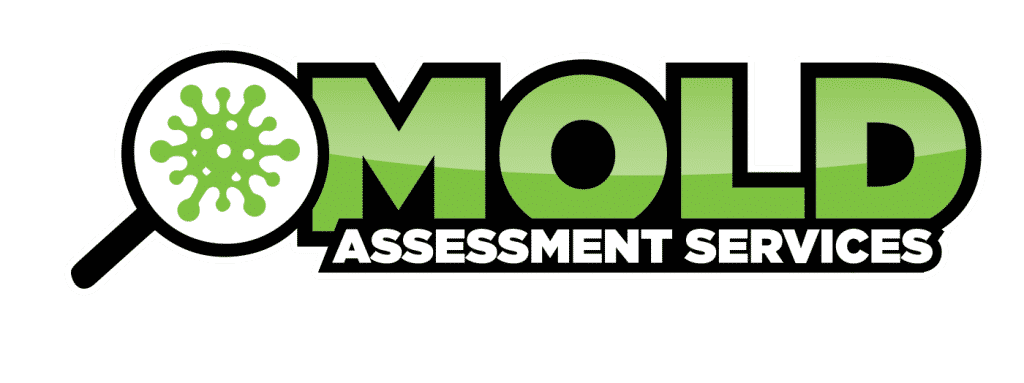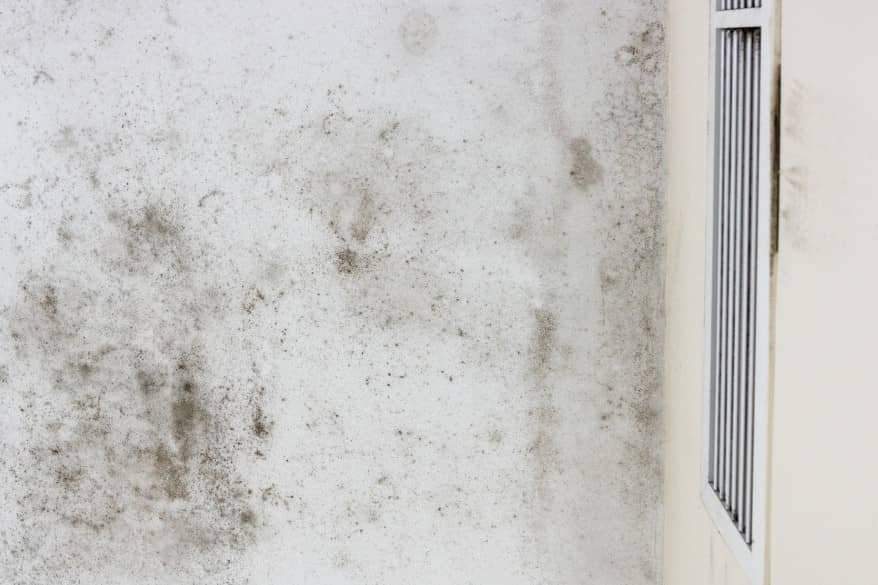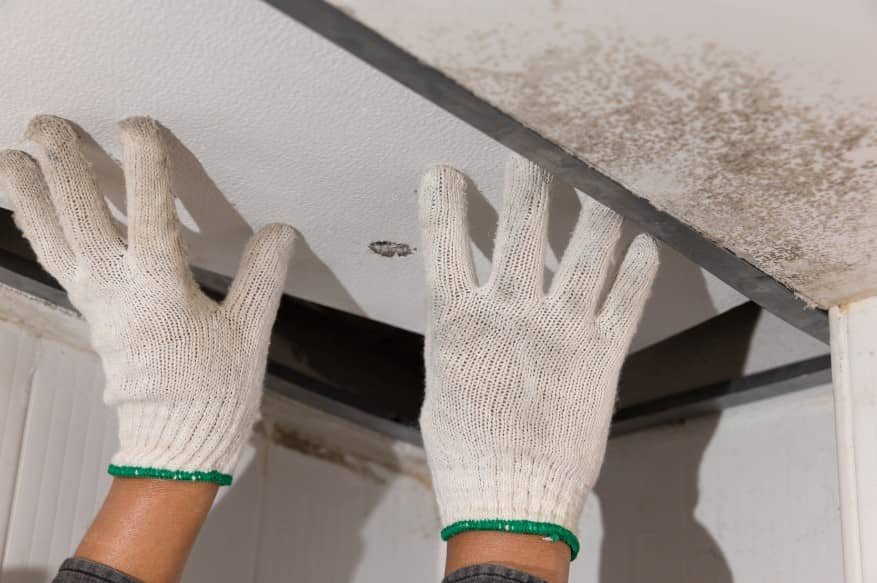
Mold prevention is crucial in securing your home, not only for maintaining a clean and healthy environment, but also for preventing potential damage to your property and belongings. Mold is a type of fungus that grows in warm, damp, and humid conditions. It can spread quickly and cause various health concerns, making it important to take preventive measures. Many clients ask, “How can I secure my home against the threat of mold?” Below are a few sure fire ways to do just that.
Mold Prevention: Several factors can contribute to the growth of mold in homes
- Moisture: Excess moisture in the air or on surfaces can create a breeding ground for mold.
- Poor ventilation: Inadequate air circulation can trap moisture and increase the chances of mold growth.
- Leaks and water damage: Any leaks or water damage in your home can lead to mold growth if not promptly addressed.
- Humidity: High levels of humidity can create the perfect environment for mold to thrive.
Identifying mold in your home can be tricky as it can grow in hidden places such as behind walls or under flooring. However, some signs of mold infestation include a musty odor, visible mold growth, and water stains on walls or ceilings.
Mold exposure can cause a variety of health issues, including respiratory problems, allergies, and even neurological symptoms. It is essential to take proactive steps to prevent mold growth in your home. Here are some easy strategies to follow:
- Fix any leaks or water damage immediately.
- Regularly clean and maintain your HVAC system.
- Use dehumidifiers in damp areas.
- Properly ventilate bathrooms and kitchens.
- Keep indoor plants to a minimum.
- Use mold-resistant paints and materials.
- Regularly clean and dry bathrooms and showers.
- Use a HEPA filter vacuum.
- Keep gutters and downspouts clean.
- Monitor indoor humidity levels and keep them between 30-50%.
By following these preventive measures, you can ensure a mold-free and healthy home for you and your family.
Key Takeaways:
Don’t ignore leaks or water damage – fix them immediately to prevent mold growth. Regularly clean and maintain your HVAC system to prevent mold spores from spreading throughout your home. Keep indoor humidity levels in check, use dehumidifiers in damp areas, and properly ventilate bathrooms and kitchens for mold prevention.
Why Is Mold Prevention Important?
It’s crucial to secure your home with these mold prevention measures to protect your health and property. Mold can lead to respiratory issues and harm the structure of your home. By implementing preventative measures, such as controlling indoor humidity, promptly fixing leaks, and ensuring proper ventilation, you can create a mold-resistant environment.
What Causes Mold in Homes?
Mold growth can be a common issue in homes, causing not only unpleasant odors but also potential health hazards. In order to effectively prevent mold, it is important to understand the root causes of its growth. In this section, we will discuss the various factors that contribute to mold growth, including moisture, poor ventilation, leaks and water damage, and high humidity levels. By understanding these causes, you can take the necessary steps to keep your home mold-free.
1. Moisture
- Promptly repair any plumbing leaks to prevent the buildup of moisture.
- Ensure proper ventilation in bathrooms, kitchens, and attics.
- Use exhaust fans in high-moisture areas to reduce humidity levels.
- Keep indoor humidity levels below 60% for mold prevention.
- Utilize moisture-absorbent materials in damp areas to prevent the accumulation of moisture.
2. Poor Ventilation
Poor ventilation, such as inadequate air exchange, can lead to the growth of mold. When moisture and airborne spores are unable to properly circulate, they create an environment that is conducive to mold growth.
To address the issue of poor ventilation, it is important to ensure proper air circulation, especially in areas such as bathrooms and kitchens. This can be achieved by using exhaust fans, opening windows, and even utilizing air purifiers to decrease the conditions that promote mold growth.
3. Leaks and Water Damage
- Regularly inspect and maintain plumbing and appliances to prevent.
- Address any signs of water damage promptly, such as discolored walls or ceilings.
- Ensure proper sealing around windows and doors to prevent water intrusion.
- Install a water leak detection system to quickly identify and mitigate any.
Pro-tip: Periodically check areas prone to 3. leaks and water damage, such as basements and crawl spaces, to catch and address issues early.
4. Humidity
- To maintain indoor humidity levels between 30-50%, incorporate dehumidifiers into your home.
- Ensure good ventilation throughout the house, especially in areas that are prone to moisture buildup.
- Regularly check for and fix any sources of leaks or water damage to prevent the accumulation of humidity.
In 1902, Willis Carrier invented the modern air conditioner to control humidity at a printing plant, revolutionizing indoor comfort and environmental control.
 mold infestation is the first step in tackling this problem. These signs include a musty odor, visible growth on walls and ceilings, and water stains indicating moisture issues.” class=”wp-image-25306″/>
mold infestation is the first step in tackling this problem. These signs include a musty odor, visible growth on walls and ceilings, and water stains indicating moisture issues.” class=”wp-image-25306″/>Mold Prevention: Identify Mold in Your Home
Learn how to identify mold in your home by following these steps:
- Check for visible signs of mold, such as black spots on walls, ceilings, or floors.
- Use your sense of smell to detect a musty or earthy odor in different areas of your home.
- Inspect areas prone to moisture, like bathrooms, kitchens, and basements, for mold growth.
- Look for water leaks, condensation, or water stains, as these indicate potential mold breeding grounds.
- If you are unable to locate mold, consider hiring a professional mold inspector for assistance.
Secure My Home: What Are the Health Risks of Mold Exposure?
Exposure to mold can result in a variety of health risks, including respiratory issues, allergies, and potential skin and eye irritation. Inhaling or coming into contact with mold spores can lead to symptoms such as coughing, wheezing, throat irritation, and nasal stuffiness. Those with mold allergies or asthma may experience more severe reactions. Furthermore, prolonged exposure to high levels can contribute to the development of respiratory infections or worsen existing conditions. As a result, it is crucial to enact mold prevention techniques to protect your health.
Easy Strategies for Mold Prevention
Mold is not only unsightly, but it can also pose serious health risks to you and your family. Fortunately, there are simple and effective strategies you can implement to prevent mold from growing in your home. In this section, we will discuss ten easy and practical ways to prevent mold from taking over your living space. From fixing leaks and maintaining your HVAC system to using dehumidifiers and proper ventilation techniques, these strategies will help keep your home mold-free and your family healthy.
1. Fix Any Leaks or Water Damage Immediately
- Inspect plumbing and appliances routinely for leaks.
- Address any signs of water damage promptly.
- Use water leak detectors to catch leaks early.
- Ensure proper sealing around windows and doors to prevent water seepage.
- Maintain gutters and downspouts to prevent water accumulation near the foundation.
After fixing any leaks or water damage immediately, Sarah avoided a potential mold issue in her home. By acting swiftly, she prevented costly repairs and protected her family’s health.
2. Regularly Clean and Maintain Your HVAC System
- Regularly inspect and replace air filters to ensure efficient airflow and reduce mold accumulation.
- Clean evaporator and condenser coils regularly to prevent mold growth and maintain system efficiency.
- Check for and repair any leaks or moisture buildup in the HVAC system to prevent the development of mold.
- Ensure proper drainage and clear any blockages in the condensate line to prevent water stagnation and the formation of mold.
- Schedule regular professional HVAC maintenance to address any potential mold issues and ensure optimal system performance.
3. Use Dehumidifiers in Damp Areas
- Place dehumidifiers in damp areas such as basements, crawl spaces, and bathrooms to effectively reduce moisture levels.
Did you know that dehumidifiers can play a crucial role in preventing mold growth by controlling the humidity levels in your home?
4. Properly Ventilate Bathrooms and Kitchens
- Install exhaust fans in bathrooms and kitchens to effectively remove excess moisture and odors.
- Keep the kitchen and bathroom doors open while showering or cooking to allow for proper air circulation.
- Utilize dehumidifiers to maintain optimal humidity levels in these areas.
- Regularly clean the vents and ducts to ensure efficient ventilation.
Proper ventilation of bathrooms and kitchens is essential in preventing mold growth and promoting a healthy indoor environment.
5. Keep Indoor Plants to a Minimum
- Reduce plant density: Limit the number of indoor plants to a minimum to minimize moisture and mold growth.
- Choose low-maintenance plants: Opt for plants that require minimal watering to prevent excess indoor humidity.
- Monitor soil moisture: Avoid overwatering plants and ensure proper drainage to prevent mold-friendly dampness.
- Regularly inspect for mold: Routinely check the soil and plant surfaces for any signs of mold growth.
6. Use Mold-Resistant Paints and Materials to Help with Mold Prevention
- Opt for paint with mold-resistant additives when painting high-moisture areas such as bathrooms and kitchens.
- Choose mold-resistant drywall, which has a paperless coating that helps prevent mold growth.
- Select materials like mold-resistant insulation and caulk for added protection against mold.
7. Regularly Clean and Dry Bathrooms and Showers
- To prevent mold growth, it is important to regularly clean bathroom surfaces with a disinfectant.
- Remove any mold or mildew buildup by scrubbing shower tiles and grout.
- Reduce moisture accumulation by ensuring proper ventilation in bathrooms.
- Promptly fix any leaks or drips in showers and faucets to prevent mold growth.
Regularly cleaning and drying bathrooms and showers is crucial in maintaining a healthy indoor environment and preventing mold.
8. Use a HEPA Filter Vacuum
- Select a vacuum equipped with a HEPA filter to efficiently trap mold spores and prevent their release into the surrounding air.
- Regularly vacuum carpets, upholstery, and drapes to eliminate mold spores and prevent their build-up.
- Make sure to properly maintain and replace the vacuum’s filter as recommended to ensure its ability to capture mold particles.
When utilizing a HEPA filter vacuum, make sure to prioritize thorough and consistent cleaning to reduce the presence of mold spores in your home.
9. Keep Gutters and Downspouts Clean
- Regularly remove debris such as leaves, twigs, and dirt from gutters and downspouts to keep them clean.
- Inspect gutters for any damage or sagging and promptly repair them to maintain their cleanliness.
- Ensure downspouts are positioned to direct water away from the foundation of the house, contributing to the overall cleanliness of the gutters.
- Install gutter guards to prevent debris buildup and minimize the frequency of cleaning, thus promoting clean gutters and downspouts.
By consistently keeping gutters and downspouts clean, you can effectively prevent water accumulation and potential mold growth in your home.
10. Monitor Indoor Humidity Levels
- Regularly monitor indoor humidity levels using a hygrometer.
- To prevent mold growth, keep indoor humidity levels between 30-50%.
- If humidity levels increase, promptly address the issue by using dehumidifiers or improving ventilation.
 risk of mold growth. Regular HVAC maintenance and using HEPA filters also contribute to cleaner air, reducing the spread of mold spores. By adopting these strategies, homeowners can create a healthier living space, free from the dangers of mold.” class=”wp-image-25302″/>
risk of mold growth. Regular HVAC maintenance and using HEPA filters also contribute to cleaner air, reducing the spread of mold spores. By adopting these strategies, homeowners can create a healthier living space, free from the dangers of mold.” class=”wp-image-25302″/>Must Do Steps for Mold Prevention
- Control humidity levels by using air conditioners and dehumidifiers to prevent mold growth.
- Ensure proper ventilation in bathrooms, kitchens, and laundry areas to avoid mold buildup.
- Use mold-resistant products for construction and renovation to prevent mold from forming.
- Inspect and promptly fix any leaks in roofs, walls, and plumbing to prevent moisture buildup and mold growth.
- Remove and replace flooded carpets and upholstery to prevent mold from spreading.
- Keep indoor spaces clean and dry to prevent the growth of mold.
What to Do If You Have Mold in Your Home
If you discover mold in your home, it’s important to assess the extent of the infestation. For smaller areas, you can try DIY methods like using vinegar or hydrogen peroxide. However, for larger areas or serious mold issues, it’s best to consult a professional mold remediation service. Additionally, it’s crucial to identify and address the source of moisture to prevent future mold growth. Keep an eye on humidity levels and ensure that affected areas are kept clean and dry.
To prevent mold from occurring in your home, make sure to maintain proper ventilation, promptly fix any leaks, and consider using dehumidifiers in damp areas.
Frequently Asked Questions
How can these mold prevention steps keep mold from growing in my home?
The best way to prevent mold is to control moisture. Keep indoor humidity below 60%, repair leaks, and use exhaust fans to eliminate excess moisture. Regularly inspect and maintain hoses, pipes, and fittings to prevent leaks. Use mold-killing products and add mold inhibitors to paint.
What are some sources of excess moisture in homes?
Some sources of excess moisture include leaky pipes and faucets, not using exhaust fans, and flaws in the air conditioning system. Other sources include clogged gutters, building leaks, and poor water drainage around the house. It is important to eliminate these sources to prevent mold growth.
What are the negative health effects of mold in homes?
Mold in homes can cause health problems such as allergic symptoms, hay fever, and asthma attacks. It can also lead to dry skin and nasal passages. It is important to respond fast and seek professional help for removal if mold is suspected in the home.
Does homeowners insurance cover mold damage?
Mold, along with rot and insect infestation, is considered a home maintenance issue and is typically not covered by standard homeowners insurance policies. However, if mold growth is a direct result of a covered peril, such as a burst pipe, the cost of removal may be covered. It is important to check with your insurance provider for specific coverage and limitations.
What are some preventative steps to keep mold out of my home?
To prevent mold, it is important to control moisture, repair leaks, and use exhaust fans to eliminate excess humidity. Regularly clean with mold-killing products and add mold inhibitors to paint. Keep indoor humidity between 30-60%, and install proper ventilation in kitchens and bathrooms. It is also important to maintain gutters and inspect for any sources of water buildup.
How can I check and secure my home from mold?
Signs of possible mold growth include musty smells and watermarks on walls and ceilings. If mold is suspected, it is important to take proper precautions and seek professional help for removal. A Mold and Moisture Home Inspection Checklist, can help identify problem areas in homes. You can also contact a specialist for a free inspection.
Can MAS Help Secure My Home and Increase Mold Prevention?
Looking to Are you tired of battling mold spots and dealing with the musty smell in your home? It’s time to take definitive action against mold with our expertly curated strategies for prevention and maintenance. From understanding the root causes of mold growth to implementing practical solutions like moisture control, proper ventilation, and the use of mold-resistant materials, we cover it all. Don’t let mold compromise your health and the integrity of your home. Protect your property and health by contacting Mold Assessment Services today.


